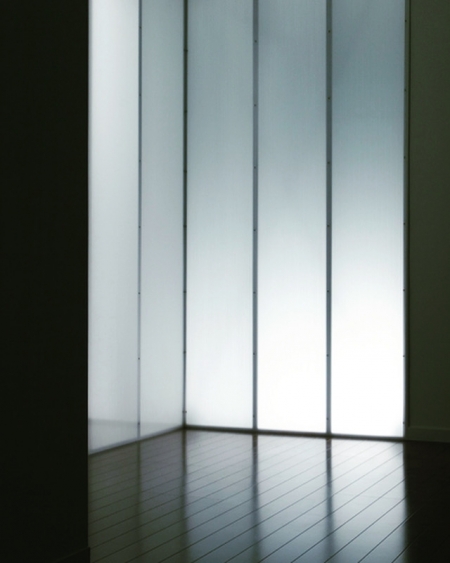作者により違う
連続的に変化する壁の厚みの中に全ての設えが入り込むとしたら、その壁の厚みの変化の度合い自体が暮らしそのものを反映するようになるし、壁の厚みを連続的に変化させるためには自然発生的に、そこに、余地や余白を生み出す。
設えが密集していれば、壁の厚みの変化は激しく、それは暮らしの営みの密度が濃いことになるし、それはより私的な空間であることを表現している。だから、人はリラックスして余地や余白に気分を投影しやすいし、そうすると、人はそこに独自の物語を紡ぎ出す。
建築と人の関係性を考える時、そこに、誰にも理解されはしないが、その人独自の物語が必ず存在するようになると考えている。
そして、その物語の方向性を意図的に導くようにするのが建築のデザインであり、だから、その建築の作者の表現としてのデザインは人によって違い、そこには合う合わない、好き嫌いが存在するようになる。
"Varies by author"
If all installations enter into the continuously changing wall thickness, the degree of change in the wall thickness will reflect the living itself, and the wall thickness will change continuously. Spontaneously creates space and margins there.
If the installation is dense, the change in the wall thickness will be drastic, which means that the living activities are denser and it represents a more private space. So people can relax and easily project their mood in the room and margins, and then people spin their own stories there.
When thinking about the relationship between architecture and people, no one understands it, but I believe that there will always be a story unique to that person.
And it is the design of the architecture that deliberately guides the direction of the story, so the design as the expression of the author of the architecture varies from person to person, and there are likes and dislikes that do not fit there It becomes like this.

